The Singapore Armed Forces (SAF) has set up six Community Recovery Facilities (CRFs) to house Covid-19 patients who are well and clinically stable.
CRFs are part of the Ministry of Health (MOH)'s overall strategy to provide tiered facilities that support the rising numbers of individuals testing positive in Singapore according to their needs:
- Public hospitals: Severe cases requiring intensive and acute care will be warded here.
- Private and community hospitals: For patients with less serious acute clinical conditions.
- Community Care Facilities: For patients with mild or no symptoms.
- Community Recovery Facilities: For patients who have remained well for 14 days and are clinically stable.
- Swab Isolation Facilities: For those who are waiting for their swab results, but cannot self-isolate at home.
Located in army camps, some of which required tents set up
These six CRFs set up by the SAF are located at Amoy Quee, Bedok, Jurong, Guillemard, Lim Chu Kang and Tanjong Gul Camps.
They were set up and managed by the SAF HQ 9 Division, under Task Force Commander of SAF-managed CRF camps COL Chua Jin Kiat.
About 600 servicemen are currently involved with the operations of the CRFs.
These six CRFs have been operational since April 28. Over the past eight days, these camps have already taken in an estimated 300 patients each day.
As of Wednesday (May 6), these military facilities now house some 3,000 patients and have a maximum capacity of 5,300 beds. Currently, all the patients housed in the six SAF camp CRFs are migrant workers.
 Personnel involved in managing the CRFs at the SAF camps are equipped with Personal Protective Equipment that is in line with Ministry of Health’s guidelines. Courtesy of MINDEF.
Personnel involved in managing the CRFs at the SAF camps are equipped with Personal Protective Equipment that is in line with Ministry of Health’s guidelines. Courtesy of MINDEF.
Speaking about the process of setting these up, Chua says there was a considerable amount of "legwork" involved.
For some of the vacant camps like Guillemard and Tanjong Gul, contractors had to be bought in to erect tentage to house the patients because the buildings in these camps are structurally unsafe.
"We have had to build big tentage, kind of like the one that you see if you go to the Army Open House... and they are able to accommodate anything between 40 to 75 patients."
Other infrastructure like meal areas, toilets, and mobile showers were also brought in and set up within two weeks.
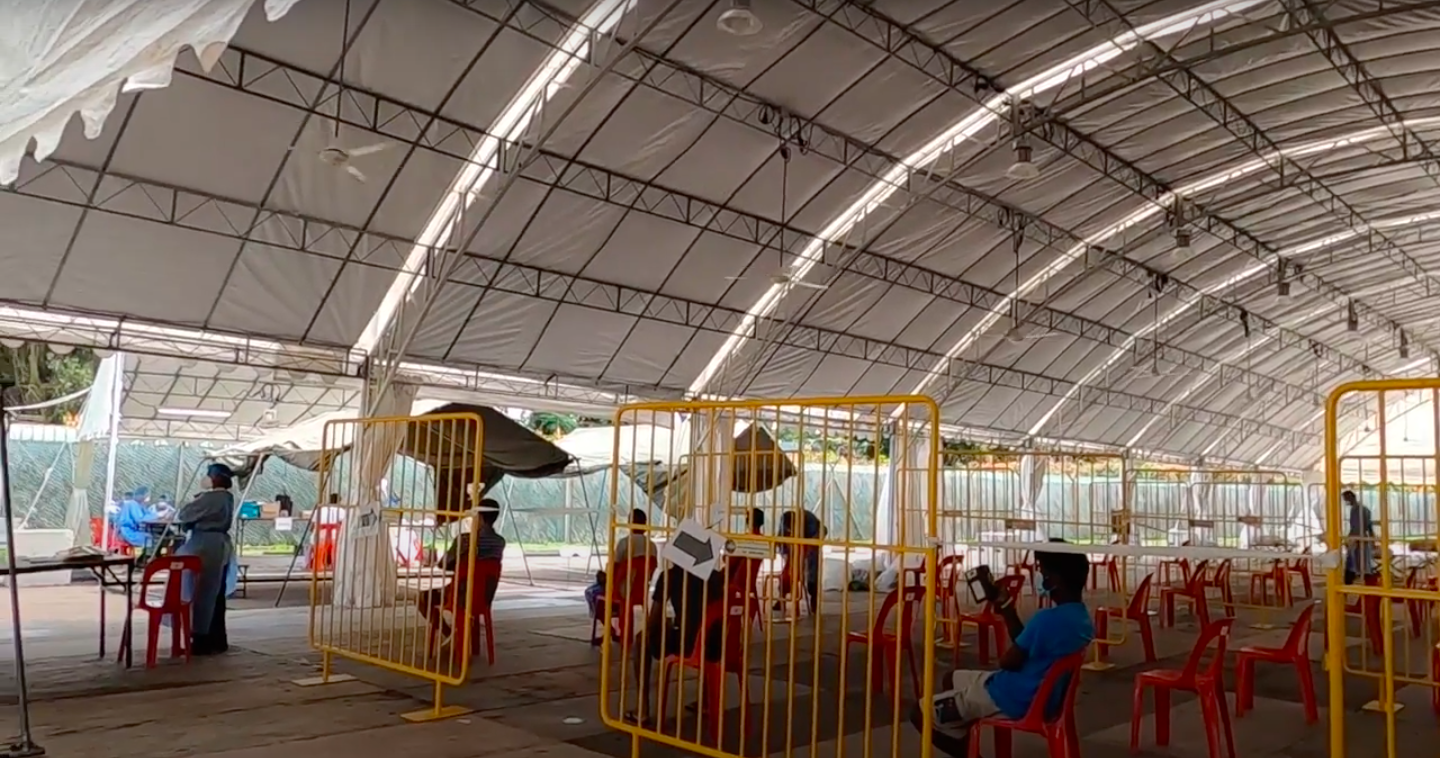 Tentage set up. Courtesy of MINDEF.
Tentage set up. Courtesy of MINDEF.
Facilities demarcated into Red, Yellow & Green zones
The premises of each CRF are clearly zoned according to the amount of contact a staffer, volunteer or helper might have with infected patients.
This zoning system is aimed at minimising any risk of transmission between Covid-19-positive patients and the people who attend to them.
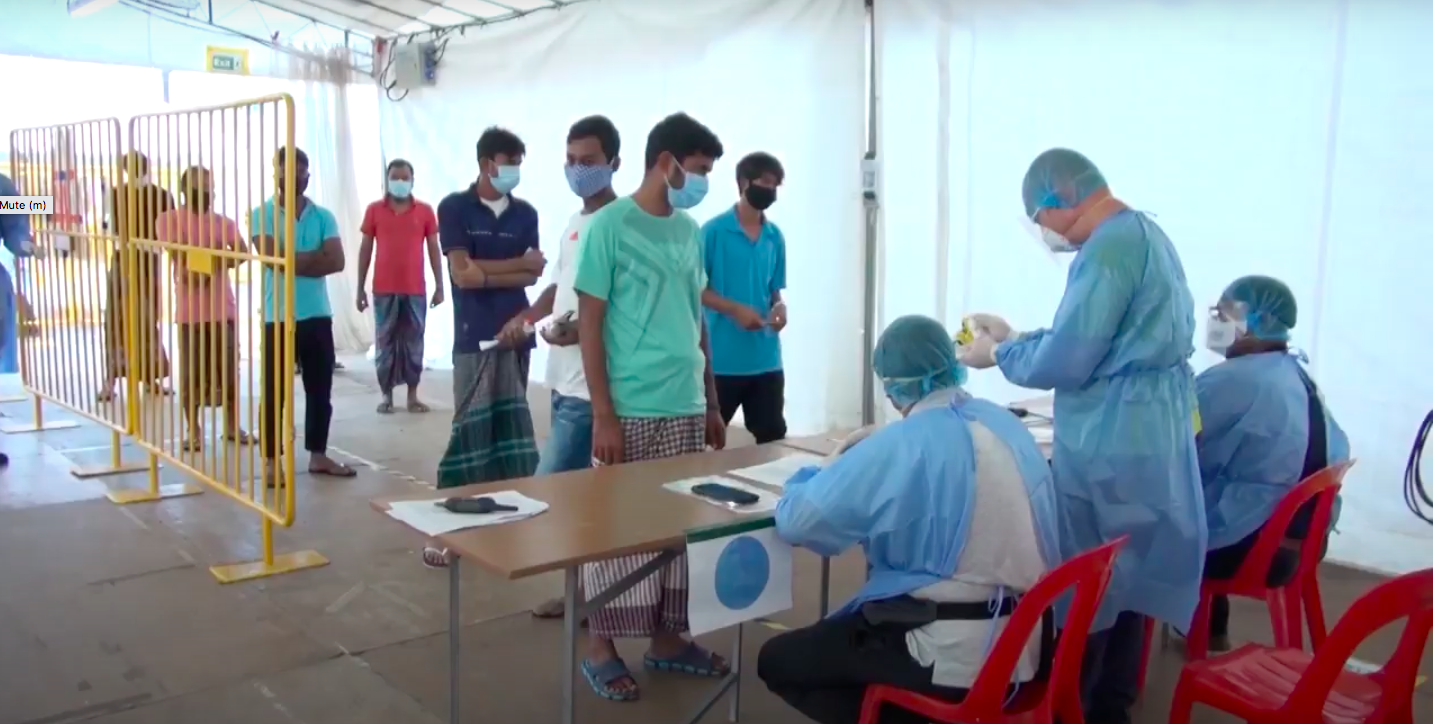 Workers being in-processed. Courtesy of MINDEF.
Workers being in-processed. Courtesy of MINDEF.
Red Zones are self contained areas consisting of patients' accommodation, dining areas, toilets, showers, and recreational spaces such as open fields.
Apart from the patients, no one is allowed to enter the Red Zones unless they don full Personal Protective Equipment.
This applies not just to servicemen but also civilian contractors and vendors involved in various areas serving the patients.
"We have very clear rules about who actually needs to go and interact with the patients, and we have tried to minimise this whether it's our own regulars or some of the civilian contractors," said Chua.
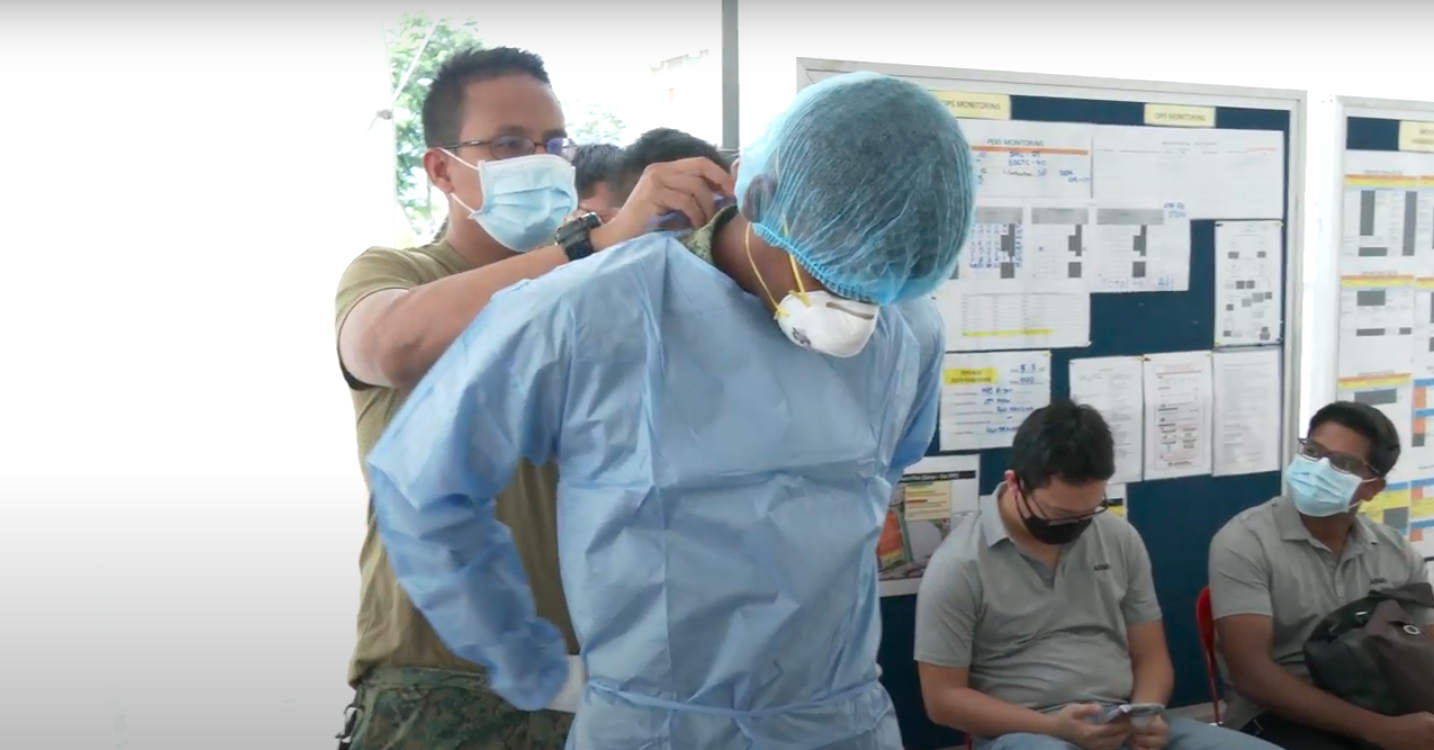 Personnel donning full PPE. Courtesy of MINDEF.
Personnel donning full PPE. Courtesy of MINDEF.
Yellow Zones are transit areas — corridors that patients walk through to get to their accommodation, for instance. People passing through the Yellow Zones need to wear a face mask, face shield, and gloves.
Green Zones are general areas that patients do not pass through or walk to at all. Those in the Green Zone only need out wear a face mask.
 Patients are able to move about freely within their designated sectors in the CRFs. Courtesy of MINDEF.
Patients are able to move about freely within their designated sectors in the CRFs. Courtesy of MINDEF.
Mobile minivan sells necessities to patients, roving medical teams provide needed care
The facilities provided are basic, but as Chua puts it, they provide a sense of normalcy for the workers staying there.
Part of their job, he said, is also to provide reassurance for the workers in the CRFs who might be overwhelmed by fear and uncertainty from testing positive for Covid-19.
"[Here at the CRF] we sort of tell them that, 'Eh look brother, you're almost there. One more place, you're cured and you can go back to work.' It's about providing an initial reassurance, letting them know that we will continue to take care of them."
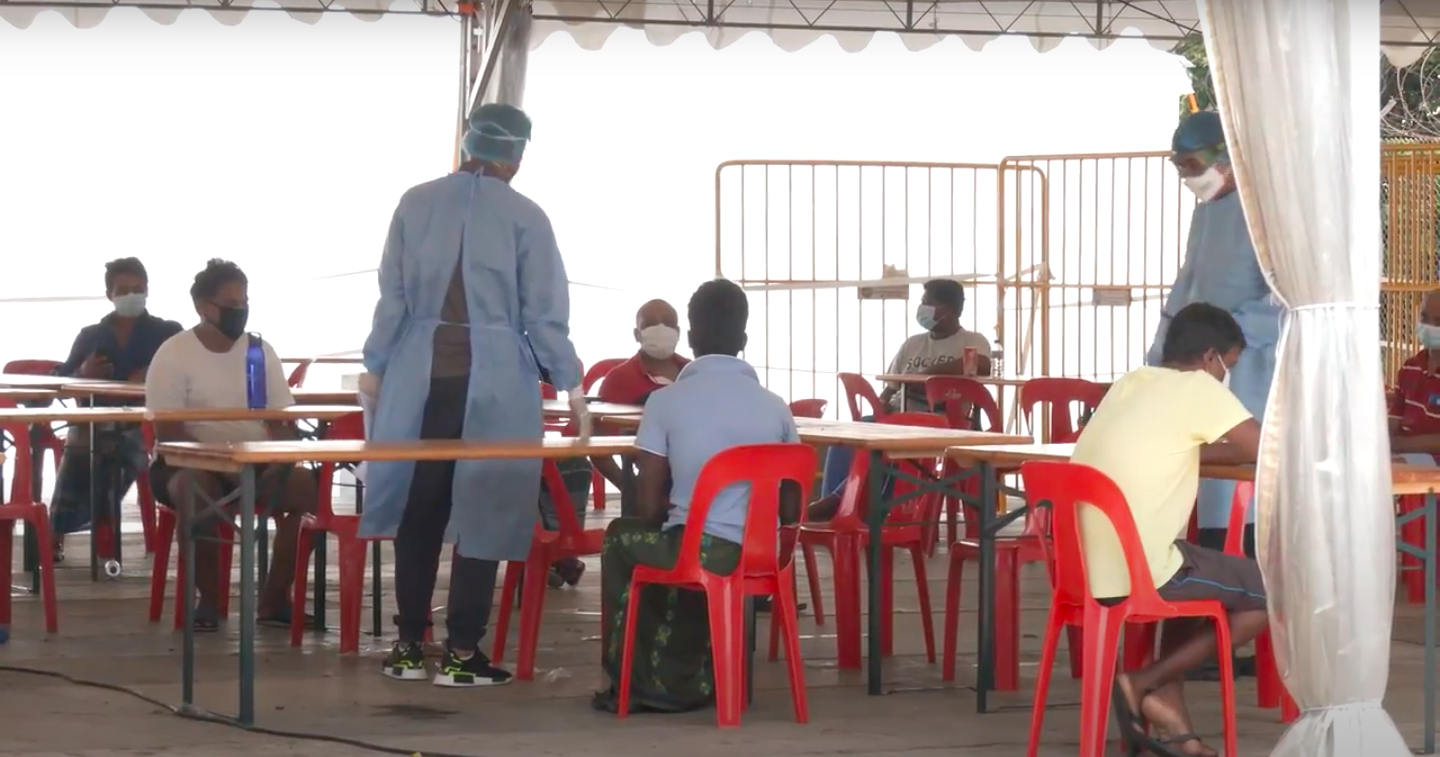 Area for meals. Courtesy of MINDEF.
Area for meals. Courtesy of MINDEF.
Apart from a place to sleep and fixed mealtimes, each worker has access to a charging point, WiFi, SIM cards, and some outdoor space to roam around.
For their other needs — like toilet paper, towels, snacks, drinks, and even clothes — a mobile minivan (or a "ninja van" in army parlance) turns up regularly for the patients to purchase them from.
A few roving medical teams (consisting of SAF medical doctors and medics) also provide basic healthcare for the patients, if they require it.
 Patients waiting to see the roving medical team. Courtesy of MINDEF.
Patients waiting to see the roving medical team. Courtesy of MINDEF.
Generally, patients see the medical teams for minor ailments like body pains and headaches, said Chua.
The general approach, he added, is one with some degree of empathy.
"I suppose, as a military, this is something that we have learned over the years — how we treat our soldiers, or treat our NS men — and we try to apply some of these in how we treat patients who are with us."
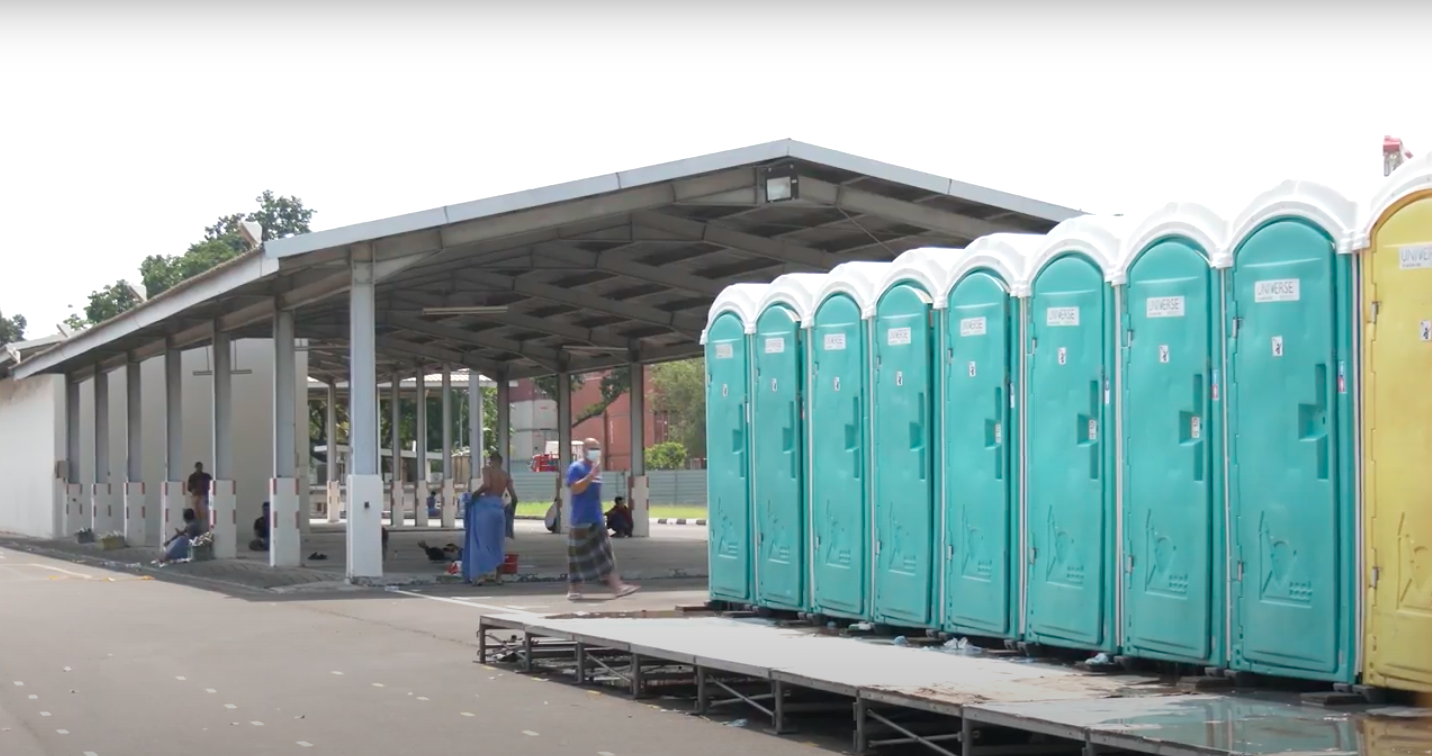 Mobile toilets. Courtesy of MINDEF.
Mobile toilets. Courtesy of MINDEF.
Received mainly positive feedback
So far, Chua and his men have received feedback on their service — both good and bad — through WhatsApp group chats formed between the servicemen and patients.
"So, for example, you know, when you cook food for so many people, there will be some that don't like the way you cook," he said.
Most, however, appreciate what's being done, he adds, because they see the effort by the servicemen on the ground.
Generally, the patients are grateful for the care they receive not just in the CRFs, but in Singapore in general.
"Some of them even openly share that they have friends who work in other countries who also have Covid-19 and their friends are certainly not as well-treated as the way they are in Singapore."
 Patients consulting the roving medical team at the CRF at Tanjong Gul for minor ailments such as headaches. Courtesy of MINDEF.
Patients consulting the roving medical team at the CRF at Tanjong Gul for minor ailments such as headaches. Courtesy of MINDEF.
Handing over to private contractors
Soon, though, the SAF servicemen who are running the CRFs in the camps have to return to their primary jobs.
Chua says they are in the process of handing over the management of these facilities to private contractors. According to Chua, some of these contractors have expertise in running dormitories.
"So the regulars are trying to hand over processes, systems, and even a lot of the little things that go on behind the scenes so that the facility managers can continue to provide the same level of care, and the same kind of welfare for the patients."
The full handover is expected to be completed in two to three weeks.
Top image courtesy of MINDEF.
If you like what you read, follow us on Facebook, Instagram, Twitter and Telegram to get the latest updates.
